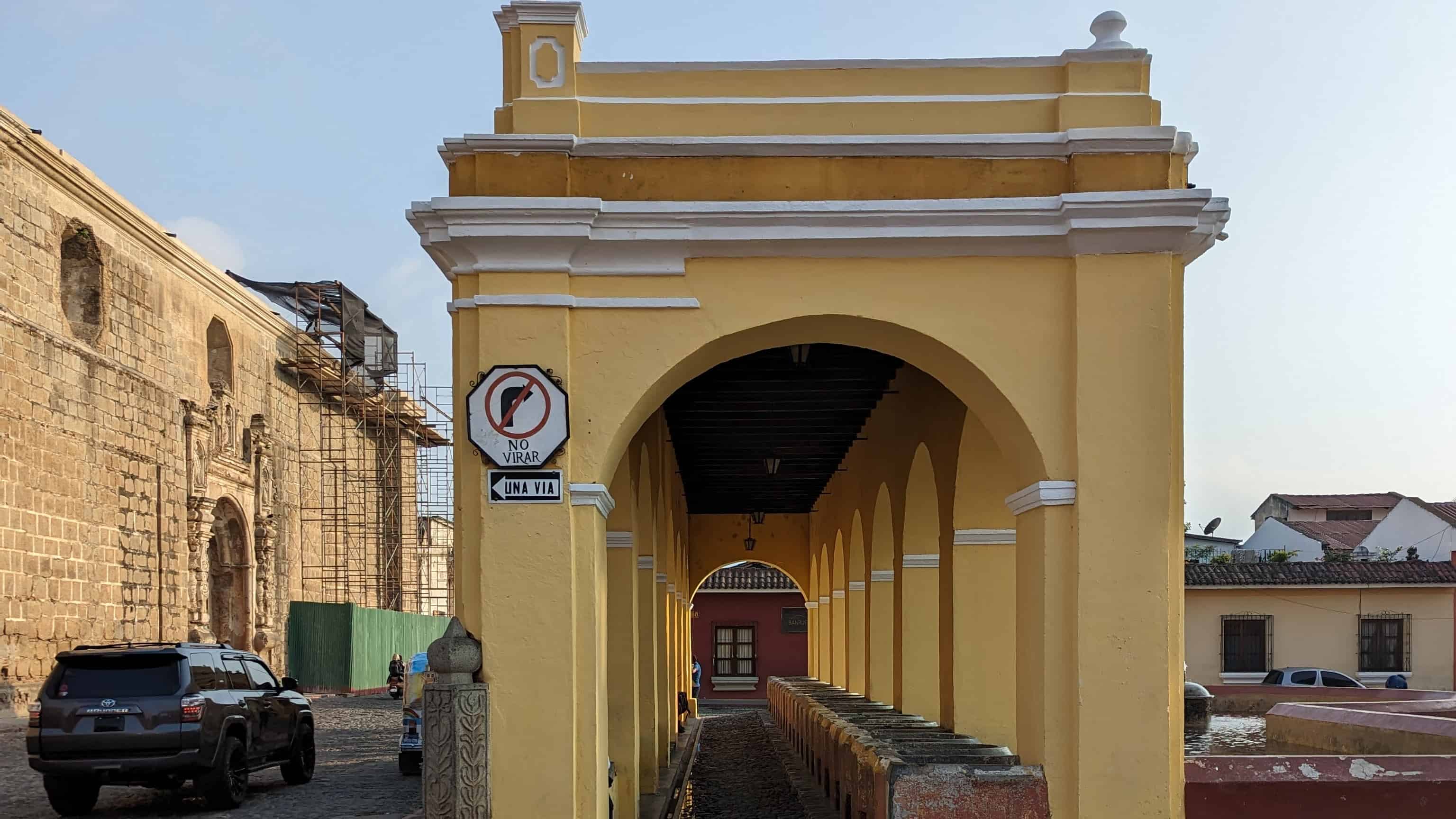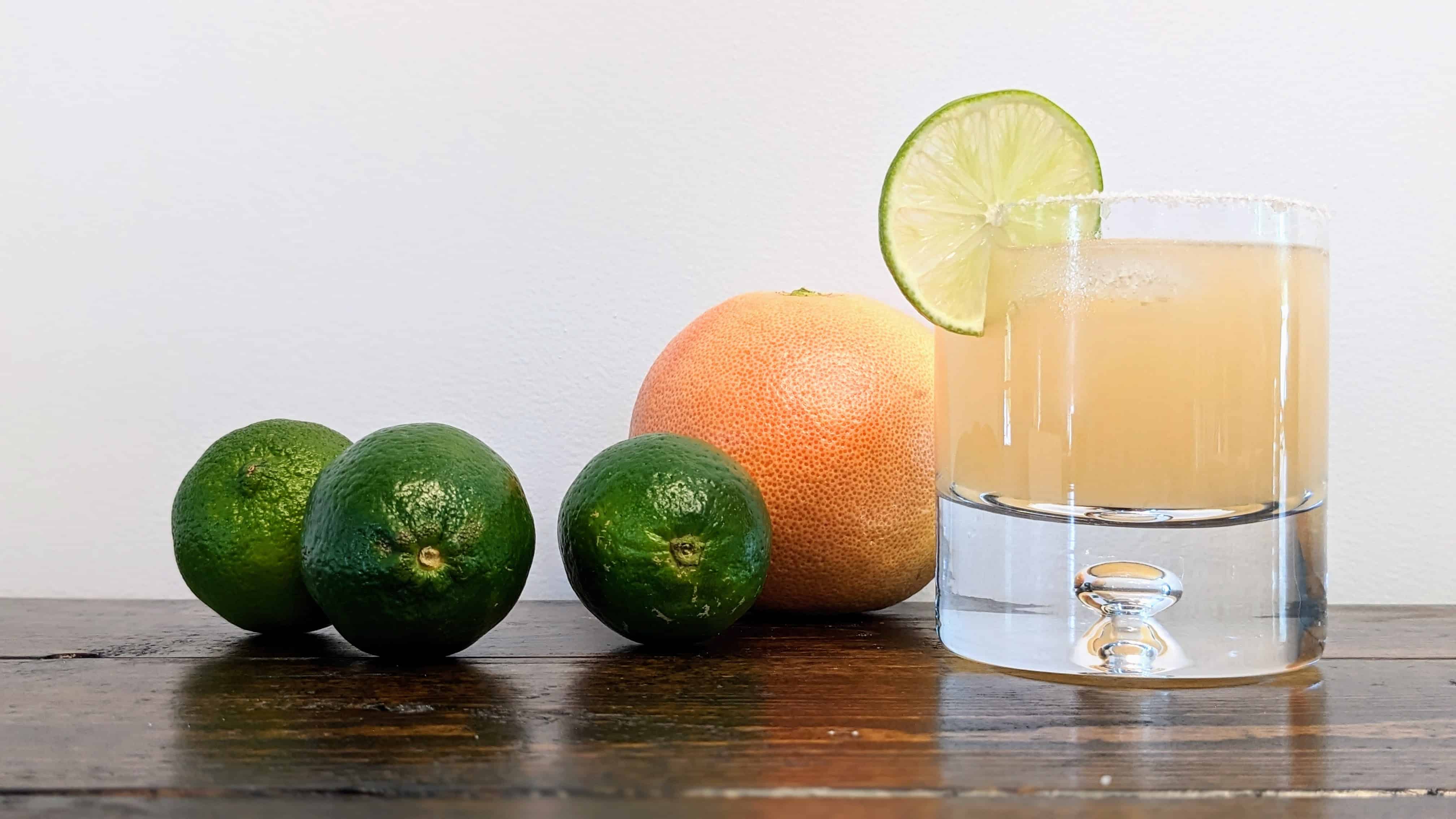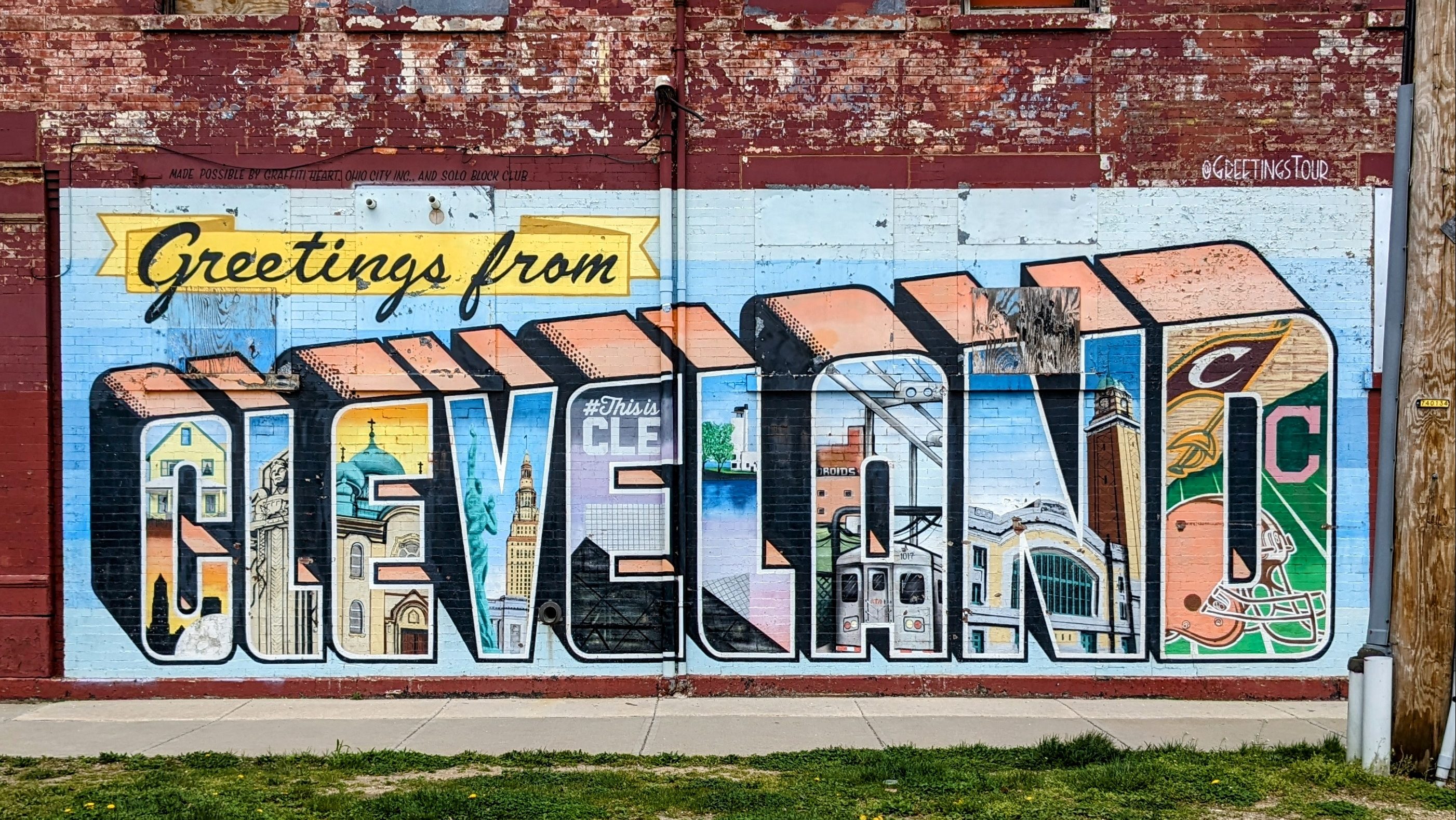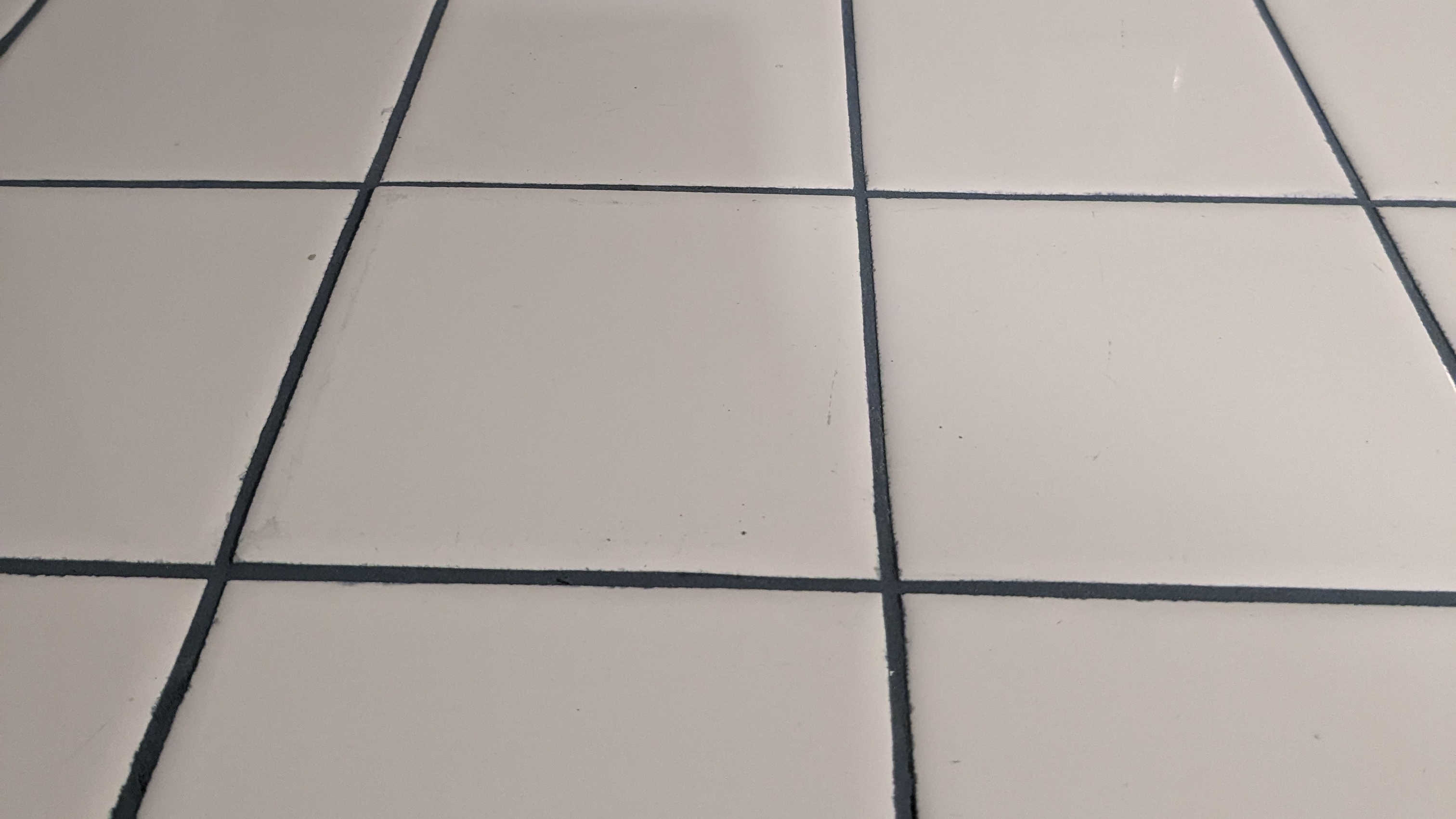The first thing I like to do when I get to a new city is a little walking tour. That doesn’t always happen, but it’s a good way to get oriented and discover if there’s anywhere I want to explore more deeply.
Choose from any number of private or group tours, some of which include street food or visits to the market. Or do your own free self-guided tour on your own time, using my outline. I’m including a Google Maps link for each of the stops to help you follow along and also so that if you want to enter any of the sites, you’ll be able to see when they’re open. Here’s the full map so you can see what you’re getting into before you start.
This post contains affiliate links and I may earn a small commission when you make a purchase using the links at no additional cost to you.
Where to Start
Here’s more information about how to get to Antigua, getting around Antigua, what to bring with you, where to stay, where to eat, and more information about what to expect.
Once you’ve made it to Antigua, dropped off your luggage, and maybe had a good sleep and/or something to eat, make your way to Iglesia de la Merced to officially start your tour.
1. Iglesia de la Merced

This beautiful 1767 building has one of the most iconic facades in Guatemala. It is a striking yellow building trimmed with ornamental white plaster. The structure was constructed with thick walls to withstand earthquakes and it remains in good condition to this day. The same can’t be said of the adjacent convent ruins. Watch for a candlelit procession, accompanied by bell ringing and firecrackers, starting and ending here on the last Thursday evening of each month.
2. Arco de Santa Catalina

The Santa Catalina Arch is definitely Antigua’s most iconic monument. It was built in 1694 to enable nuns from the Santa Catalina convent to cross the street without being seen. The clock tower was added in the 1800s.
3. Antiguo Colegio de la Compañía de Jesús

Construction of this Jesuit monastery and college was completed in 1728 and consisted of three cloisters and a temple. It was a vital component of Antigua life until the Jesuits were expelled in 1767. The earthquake of 1773 left it in ruins. The Spanish Agency for International Development Cooperation assumed the commitment to restore the complex in exchange for using it as the Spanish Cooperation Training Center.

4. Palacio del Ayuntamiento (City Hall Palace)
This double-decker structure facing Parque Central dates from the 18th century. The upper floor of the palace holds town offices.

The ground floor houses the Museo del Libro Antiguo, showcasing the early days of Guatemalan printing plus a replica of Guatemala’s first printing press, which began work here in the 1660s. On prominent display is a first edition of Don Quixote de la Mancha (Part II).
5. Parque Central
Parque Central is the central gathering place for locals and visitors alike. It is surrounded by beautiful colonial structures and filled with people sitting and strolling and shining shoes and buying balloons.

6. Palacio de Los Capitanes

This stately double arcaded façade sits on the other side of Parque Central, opposite Palacio del Ayuntamiento, and is all that remains of the original palace complex. The palace dates from 1549 and was the colonial headquarters for all of Central America.
7. Museo de Santiago de Los Cabelleros (Historic Weaponry Museum)
This museum is located in what was the Royal Palace of the Captains General. The museum has some of the best exhibits tracing the history of Guatemala. It has a very interesting collection of antique weapons dating from the conquest to the beginning of the 20th century

8. Catedral San José (Antigua Guatemala Cathedral)

The original cathedral on this site, Catedral de Santiago, was begun in 1545, was destroyed by an earthquake in 1583, rebuilt from 1669 to 1680, and destroyed by another earthquake in 1773. It was partially rebuilt again in the 1800s as Catedral San José and otherwise makes for some impressive ruins accessed via 5a Calle Oriente. Expect chunks of giant pillars and archways covered in vines and other wild greenery. Behind the altar are steps leading down to a chapel with a smoke-blackened Christ.
9. Museo del Arte Colonial
Antigua’s Museum of Colonial Art is housed inside the former University of San Carlos, a beautiful colonial building whose cloisters have been left largely intact through centuries of earthquakes. The museum is known for its extensive collection of sculptures, paintings, and furniture from the 16th to 18th centuries. There’s also a display of photographs of Semana Santa celebrations.
10. Iglesia Y Convento de San Francisco

Also know as San Francisco el Grande, it’s façade is similar to that of Catedral San José. Small parts of this sanctuary date back to 1579, though is has been repeatedly damaged by earthquakes particularly in the 1700s. It has been reconstructed in parts over the past 450 years but areas of ruin still remain. This site is frequently visited by locals and pilgrims alike because of Friar Pedro, a beatified 17th-century monk whose tomb is here.
11. Museo Casa Santo Domingo (Hotel Casa Santo Domingo)
Founded by Dominican friars in 1542, Santo Domingo became the biggest and richest monastery in Antigua. Following the earthquakes of the 1700s, the buildings were pillaged for construction material. The site was acquired as a private residence in 1970 by a North American archaeologist, who performed extensive excavations before it was again taken over by the Casa Santo Domingo Hotel.
The archaeological zone includes the picturesque ruined monastery church, the adjacent cloister with a replica of the original fountain, and two underground crypts that were discovered during the church excavations. One of these, the Calvary Crypt, contains a well-preserved mural of the Crucifixion dating from 1683.

There are also six museums accessed through the hotel. A single admission ticket will get you access to all the museums. There’s a colonial museum, archeology museum, museum of pre-Columbian art and modern glass, silver museum, and pharmacy museum, all of which tell a story about the site’s absorbing past. Casa Santo Domingo also has beautiful landscaped gardens, a chocolate factory, a candle factory, and a popular bar and restaurant.
12. Convento de Capuchinas

The Convento Capuchinas is a perfect example of colonial architecture. Visitors to the convent can explore the grounds, including the gardens, circular tower, bathing halls, and private cells of the nuns. There’s also an art museum on the second floor.
13. Cerro de la Cruz (Hill of the Cross)
Okay, so this one is a little further away, maybe another 20-30 minutes of walking. You could also take a tuktuk. It might also be worth doing first thing in the morning, before the clouds roll in. But all it is is a large cross on top of a hill with breathtaking views over Antigua and toward Volcan de Agua.
Extra Stops
14. Convento la Recoleccion
This one is a little out of the way but worth a visit if you have time because of its otherworldly vibes. This church and monastery was erected in the early 1700s by the Récollets (a French branch of the Franciscan order), The earthquake of 1773 toppled the structure, of which only the great arched doorway remains intact. Look for open cloisters and many, many ruined walls.
15. Just Explore
I challenge you to let yourself get lost and find churches and ruins and historic laundromats not listed on this tour.

Where Else to Go in Guatemala
Here are 24 other Guatemala travel experiences.
And here are more articles I’ve written about Antigua and Guatemala.








Leave a Reply